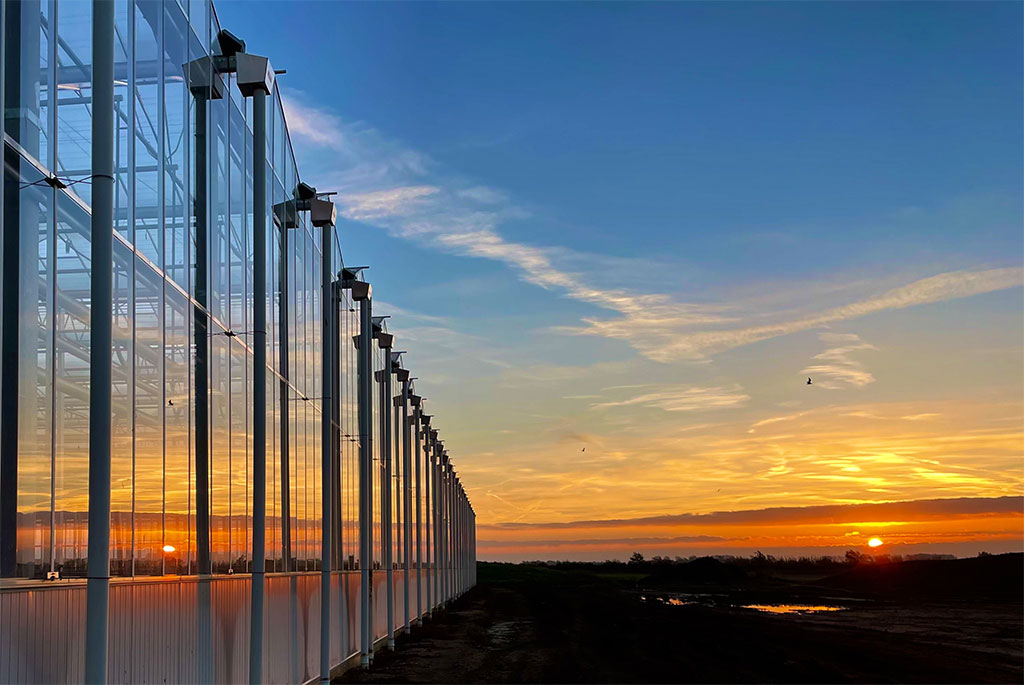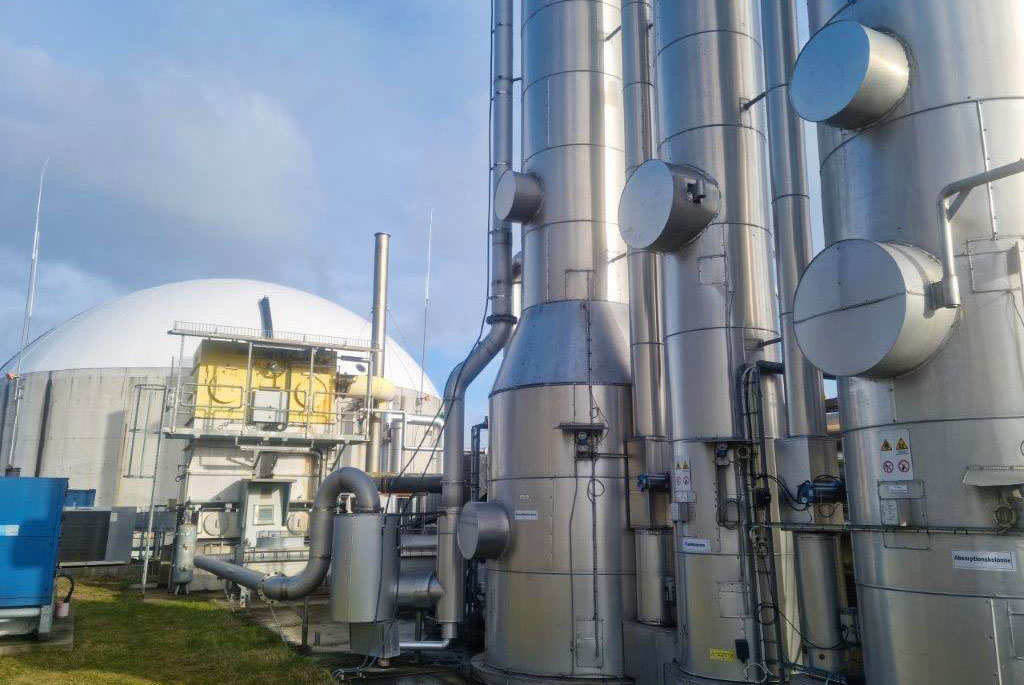Principle 7: Stewardship, investment and ESG integration
Context
Stewardship and environmental, social and governance (ESG) issues are integrated into NatWest Pension Trustee Limited’s (the Trustee’s) investment approach in a number of ways, depending on factors such as the degree of ownership control, asset class, etc.

Greenhouse, Cambridgeshire, UK. Construction of the Fund’s greenhouse development.
Image by Greencoat Capital.
-
ESG Integration through positive selection
The Trustee has taken the opportunity to invest in infrastructure and forestry assets that meet NatWest Group Pension Fund’s (the Fund’s) return target while also demonstrating positive environmental performance. The Trustee continues to look at opportunities to improve these assets through capital investment. Given the maturity of the scheme and the size of these investments, the Trustee is not likely to add to the portfolio through further acquisition of large infrastructure assets. During the reporting period, construction of the Fund’s greenhouse development was completed and construction began on a new recycling facility in Wales.
-
ESG Integration through exclusion
The Trustee’s Responsible Ownership (RO) Policy sets out a number of ESG focus areas some of which are integrated into investment arrangements by excluding certain firms or sectors. For example:
- The Trustee has made a specific decision to avoid certain coal, oil and gas issuers as it believes that externalities associated with their businesses are not correctly priced into the current market value of the securities.
- The RBS Investment Executive Limited (RIEL) ESG sub-committee works with EOS at Federated Hermes (EOS) to identify issuers that are in breach of United Nations Global Compact Principles and where these issuers are determined to present undue financial risk because of the failings identified, they are excluded from the portfolio.
-
ESG Integration through manager mandates
The Trustee appoints investment managers with the expectation of a long-term partnership, which encourages active ownership of the Fund’s assets. When assessing a manager’s performance, the focus is on longer-term outcomes and the Trustee would not expect to terminate a manager’s appointment based purely on short-term underperformance. However, a manager’s appointment could be terminated within a shorter timeframe due to other factors such as a significant change in business culture, capital structure or the investment team.
The Trustee’s investment managers are expected to take account of the RO Policy as well as having their own ESG policy. RIEL monitors each investment manager's approach to ESG on at least an annual basis and expects investment managers to continually improve on their ESG governance.
The Trustee does not often appoint new investment managers, however, any new appointment would be subject to a review of ESG policies and governance and subject to investment managers agreeing to the Trustee voting and engagement approach and agreeing to take account of the RO Policy. One new investment manager was appointed during the reporting period, and this approach was followed during the selection and appointment process.
-
ESG Integration through active ownership
The majority of the Fund’s assets are in gilts, cash and other liquid assets with no voting rights attached to them (and no alternative to holding these assets). Approximately 30% of the portfolio remains invested in assets that the Trustee can more effectively influence through responsible stewardship and engagement. The Trustee exercises control over these through its investment managers and service providers such as EOS, following the guidelines and objectives set out in the Trustee’s RO Policy.
Even within those asset classes that the Trustee can influence, the degree of stewardship varies significantly in accordance with variations in investor rights. For example, the degree of influence that the Trustee has over a company where it owns a relatively small portion of the debt outstanding is far less than those cases where the Fund owns 100% of an operating asset and where it is able to exercise control over business activity (through the relevant investment manager).
The Trustee partners with EOS on voting and stewardship engagements in respect of investment grade credit and listed equity. Voting decisions are informed by EOS’s voting guidelines (developed by EOS in collaboration with its clients, including the Trustee), as well as its pre-vote engagements, research and the situational factors. Voting guidelines are reviewed annually and are updated as necessary to reflect changes in market standards, evolving governance practice and insights gained from engagements over the prior year.
Through EOS, the Trustee is able to systematically engage with companies that are in its core engagement programme, setting clear engagement objectives and tracking progress using a milestone measurement system. The EOS Engagement Plan details the priority areas that EOS will focus on for the Trustee and other asset owners. Engagement priorities are reviewed annually through a consultation process involving all EOS clients.
Did you know?
- The Trustee’s Responsible Ownership Policy describes the extent to which stewardship and material environmental, social and governance issues are incorporated into the investment process
- Themes of interest and priority for the Trustee include climate change, modern slavery, and board diversity, among others
- Where these factors are considered to have a significant financial impact, they will be included or excluded in investment analysis at a strategic, or individual security level (as appropriate)
Activities & Outcomes
-
Case Study: Positive selection: Infrastructure / Utilities
Read more
The Trustee is a part-owner of South East Water (SEW). SEW has invested in a cross-border 4-year project known as PROWATER. The project will help to identify and forecast long-term water demand and supply challenges in its region. It aims to further contribute to climate adaptation by restoring the landscape’s ability to store water through careful catchment management with the help of ecosystem-based adaptation measures.
-
Case Study: Positive selection: Renewable Energy
Read more
The Trustee owns several anaerobic digestion plants producing natural gas which feed directly into the grid, making up gas volume that would otherwise be extracted from the earth. One of the plants has acquired equipment to remove and clean carbon dioxide that is a by-product of the production process. The clean carbon dioxide (CO2) is then compressed and sold (e.g. to carbonated drink producers), creating a closed loop system with zero CO2 emissions to the atmosphere.
This not only reduces the carbon footprint of this asset but also creates economic upside.

Anaerobic Digestion Plant, UK. Biomass is broken down to produce biogas to generate heat and power. The remaining material can be used as fertilizer.
Image by Greencoat Capital.
-
Case Study: Manager mandates: Real Estate Assets
Read more
The Trustee’s real estate investment managers are working on ways to improve the energy efficiency and energy-transition readiness of the assets. For example, in the reporting period, an electric car charging facility was installed at a property in Slough.
Also, feasibility studies are underway for solar power installations. In residential property, energy efficiency certifications are being obtained reflecting work to upgrade insulation and improve heating and appliance efficiency which lead to lower running costs to tenants.
Over time it is anticipated that the more energy efficient buildings will be able to command higher and more stable rental income.
-
Case Study: Manager mandates: Emerging market debt
Read more
By application of the Trustee’s RO Policy, a potential investment in the debt of an African sovereign issuer was avoided. The Trustee and its investment managers felt that investment in the country posed an unreasonable risk due to widespread corruption, income inequality and a high homicide rate. The investment was therefore deemed inappropriate for the Fund.
This process helped to control the risk in the emerging market debt portfolio.
-
Case Study: Exclusions: EOS and the UN Global Compact principles
Read more
The Trustee applies the UN Global Compact principles in its approach to stewardship. RIEL’s ESG sub-committee has worked in partnership with EOS to identify issuers of securities that are persistently in breach of the principles. Every quarter EOS issues a Controversial Companies Report (CCR), to all its clients. This is regularly reviewed to ensure the Trustee is either applying responsible stewardship principles and positively influencing assets in its holdings or making informed steps to divest.
The CCR is used (i) to ensure manufacturers of cluster munitions are excluded, and (ii) to identify persistent United Nations Guidelines for Consumer Protection (UNGCP) breaches to consider for exclusion. A number of companies are excluded as a result of (ii).
This process reduces the risk of buying ‘bad’ companies, thereby reducing the stock-specific risk in the assets.
-
Case Study: Engagement via EOS: Heineken and Greenhouse Gas (GHG)
Read more
EOS congratulated Heineken for its commitment to decarbonising its production by 2030 and achieving carbon neutrality across its value chain by 2040. EOS sought an update on the development of a pathway for how it intends to deliver this. The company has just released a roadmap covering 80% of its journey, including agriculture, processing of raw ingredients, brewing, packaging, logistics and cooling. Its 2030 ambition has been approved by the Science-Based Targets initiative with Scopes 1 and 2 being compliant with the 1.5°C pathway.
Heineken will continue to work on this initiative, adopting a long-term net-zero methodology and aligning its Scope 3 targets with 1.5°C.
The Trustee believes that this activity is an important risk-control for its investments, and that companies that do not adapt to reduce their GHG emissions are likely to underperform over the long term. For example, regulatory interventions to reduce carbon emissions (e.g. taxes) are increasingly likely over the coming decade and therefore this kind of carbon-reduction strategy will help to protect Heineken from this potential additional costs. It may also improve its attractiveness to investors relative to its peers, therefore improving its access to capital and share price.
